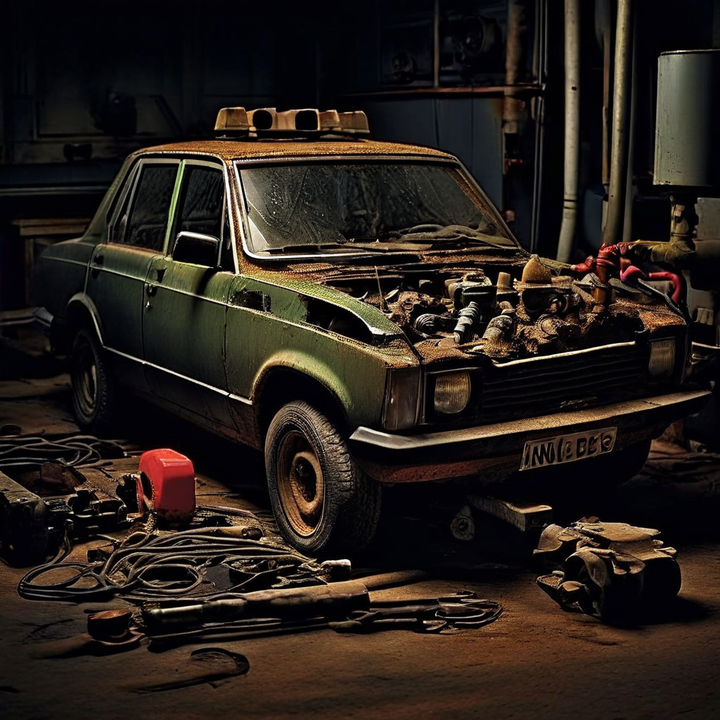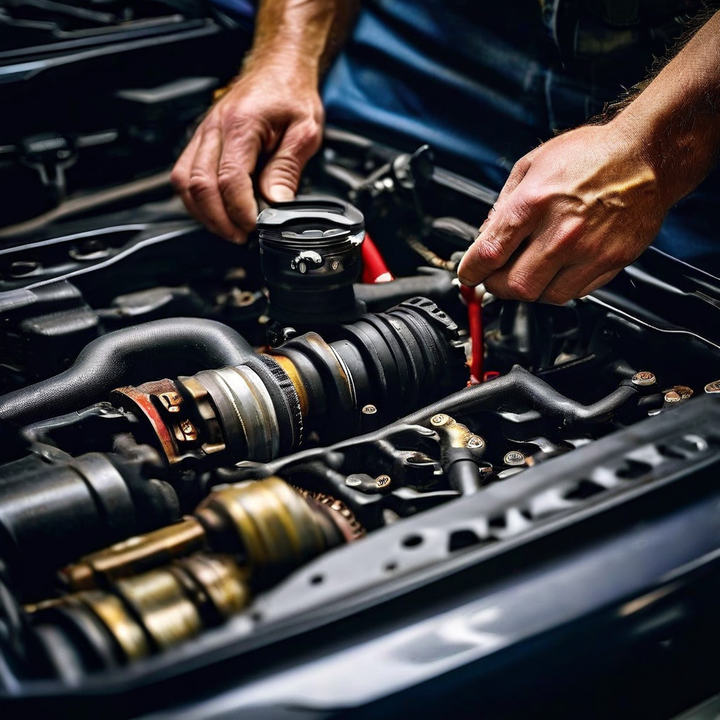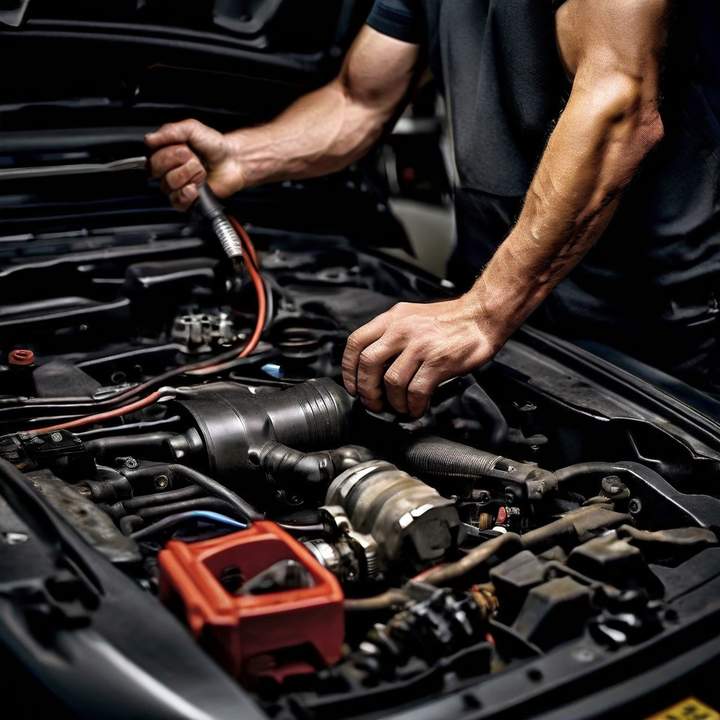


Having no oil in your car's engine but not seeing any visible leaks can be a perplexing and potentially serious issue. Engine oil is crucial for lubricating the moving parts, reducing friction, and preventing excessive wear and tear. Running an engine without sufficient oil can lead to catastrophic damage and costly repairs. Understanding the causes, symptoms, and steps to address this problem is essential for every car owner.
In this comprehensive article, I'll share my expertise and insights, guiding you through the various reasons why your car might be running low on oil without any apparent leaks. We'll explore the troubleshooting steps, repair instructions, preventive measures, and cost estimates associated with this common automotive dilemma. Buckle up, and let's dive into the world of automotive mechanics!

One of the most common reasons for the "no oil in car but no leak" situation is simply an incorrect oil level reading. This can happen due to a few factors, which we'll explore in detail:
| Cause | Explanation |
|---|---|
| Improper Dipstick Insertion | The dipstick is the tool we use to check the engine oil level. If it's not fully inserted or properly seated, you may get an inaccurate reading, leading you to believe that your car is low on oil. |
| Uneven Surface | When checking the oil level, it's crucial to park your car on a level surface. If the car is parked on an incline, the oil will shift to one side of the oil pan, resulting in an inaccurate reading on the dipstick. |
To avoid this issue, follow these steps:
Always ensure that you're checking the oil level on a flat surface, with the car parked for a few minutes to allow the oil to settle.
Double-check the dipstick by pulling it out, wiping it clean, and reinserting it fully before taking a reading.
While it may seem counterintuitive, oil consumption can occur without any visible leaks. This happens when the engine's internal components are worn or damaged, causing the oil to burn or leak internally. Here are some common causes of oil consumption:
Worn Piston Rings: Piston rings are responsible for sealing the combustion chamber and preventing oil from entering the cylinders. Over time, these rings can wear down, allowing oil to seep past and burn during the combustion process.
Valve Guide Wear: The valve guides are responsible for keeping the valves aligned and preventing oil from entering the combustion chamber. When these guides wear out, oil can leak into the cylinders and burn.
Head Gasket Failure: The head gasket seals the engine block and cylinder head, preventing coolant and oil from mixing. If the head gasket fails, oil can leak into the cooling system or combustion chambers, leading to oil consumption.
Crankcase Leaks: The crankcase is the area where the crankshaft and connecting rods operate. Leaks in the crankcase can allow oil to seep out and burn, resulting in oil consumption without any external leaks.
To better understand the process of oil consumption, let's take a closer look at the role of piston rings:
Piston rings are crucial components that seal the gap between the piston and cylinder wall, preventing combustion gases and oil from escaping. They are designed to expand and contract with the changing temperatures and pressures within the engine, maintaining a tight seal.
Over time, however, these rings can wear down due to various factors, such as:
High mileage
Excessive heat
Contaminants in the oil
Improper lubrication
When the piston rings become excessively worn, they can no longer maintain an effective seal, allowing oil to seep past and enter the combustion chamber. This oil is then burned during the combustion process, leading to oil consumption without any visible leaks.
Another potential cause of the "no oil in car but no leak" issue is a failing oil pump. The oil pump is a critical component responsible for circulating oil throughout the engine, ensuring that all moving parts are properly lubricated.
| Component | Function |
|---|---|
| Oil Pump | Circulates oil throughout the engine, ensuring proper lubrication of all moving parts. |
If the oil pump fails, it may not be able to circulate oil effectively, leading to low oil pressure and potentially causing the engine to run low on oil. This can happen without any visible leaks, as the oil may be trapped within the engine's internal components.
Symptoms of a failing oil pump may include:
Low oil pressure warning light
Increased engine noise or knocking
Decreased engine performance
Overheating
It's essential to address a failing oil pump promptly, as it can lead to severe engine damage if left unresolved.
Over time, engine oil can break down and form sludge, a thick, tar-like substance that can accumulate in the oil pan and passages. This sludge buildup can prevent proper oil circulation and drainage, leading to low oil levels without any apparent leaks.
Sludge formation is often caused by a combination of factors, including:
Infrequent oil changes
Poor-quality oil
Excessive heat or contaminants in the engine
| Factor | Explanation |
|---|---|
| Infrequent Oil Changes | Failing to change the oil at recommended intervals can lead to the breakdown of oil additives and the accumulation of contaminants, contributing to sludge formation. |
| Poor-Quality Oil | Using low-quality or incorrect oil for your vehicle can accelerate the breakdown of the oil and promote sludge buildup. |
| Excessive Heat or Contaminants | High operating temperatures or the presence of contaminants, such as dirt or moisture, can cause the oil to degrade and form sludge more rapidly. |
It's essential to follow the manufacturer's recommended oil change intervals and use high-quality oils and filters to prevent sludge buildup. Additionally, proper driving habits, such as avoiding excessive idling or short trips, can help minimize the risk of sludge formation.
If you're experiencing the "no oil in car but no leak" issue, here are some troubleshooting steps you can take:
Check the Oil Level Properly
As mentioned earlier, ensure that you're checking the oil level on a level surface, with the car parked for a few minutes to allow the oil to settle.
Double-check the dipstick by pulling it out, wiping it clean, and reinserting it fully before taking a reading.
Inspect for Leaks Thoroughly
While there may not be any obvious leaks, it's essential to inspect the engine bay, undercarriage, and the ground beneath your car for any signs of oil residue or seepage.
Look for oil stains or residue around gaskets, seals, and other components.
Check for Smoke or Burning Smell
If your engine is burning oil, you may notice excessive blue or white smoke coming from the exhaust, or a distinct burning oil smell.
These signs can indicate internal oil consumption or leaks.
Perform a Compression Test
A compression test can help identify worn piston rings or valve guides, which can lead to oil consumption.
Low compression in one or more cylinders may indicate the need for repairs or replacements.
Check Oil Pressure
Low oil pressure can be a sign of a failing oil pump or internal engine damage.
Use a mechanical or electronic oil pressure gauge to check the oil pressure while the engine is running.
By following these troubleshooting steps, you can gather valuable information to help diagnose the underlying cause of the "no oil in car but no leak" issue.
Depending on the underlying cause of the "no oil in car but no leak" issue, various repair procedures may be required. Here are some common repair instructions:
If the oil pump is faulty, it will need to be replaced. This typically involves the following steps:
Remove the oil pan, timing cover, and other components to access the oil pump.
Carefully remove the old oil pump, taking note of its orientation and any gaskets or seals.
Clean the mounting surface and ensure all passages are clear of debris.
Install the new oil pump, following the manufacturer's instructions and torque specifications.
Replace any gaskets, seals, or components removed during the process.
Refill the engine with the recommended oil and filter.
It's crucial to follow the manufacturer's instructions and torque specifications carefully to ensure proper installation and prevent future leaks or issues.
For excessive oil consumption due to worn piston rings or valve guides, these components may need to be replaced. This often requires partial or complete engine disassembly, which should be performed by a professional mechanic.
The process typically involves:
Removing the cylinder head or engine block to access the pistons and valves.
Carefully inspecting and measuring the components for wear or damage.
Replacing the worn piston rings or valve guides with new, compatible parts.
Reassembling the engine, following the manufacturer's specifications and torque values.
Performing any necessary adjustments or calibrations.
This repair can be labor-intensive and requires specialized tools and expertise, making it essential to have a professional mechanic handle the job.
Internal oil leaks caused by a failed head gasket or crankcase damage may require extensive engine work, such as removing the cylinder head or crankcase components for repairs or replacements.
The repair process may involve:

Removing the cylinder head or crankcase components to access the damaged areas.
Inspecting and cleaning the mating surfaces.
Replacing the head gasket or repairing the crankcase as needed.
Reassembling the engine, following the manufacturer's specifications and torque values.
Performing any necessary adjustments or calibrations.
These repairs can be complex and time-consuming, often requiring specialized tools and expertise. It's highly recommended to have a professional mechanic handle these types of repairs to ensure proper installation and prevent further issues.
If sludge buildup is the culprit, the engine may need to be partially disassembled for thorough cleaning. In some cases, flushing the oil system and replacing the oil and filter may help alleviate the issue.
The process may involve:
Draining the old oil and removing the oil filter.
Partially disassembling the engine to access the oil passages and components.
Using specialized solvents or cleaning agents to dissolve and remove the sludge buildup.
Thoroughly cleaning and flushing the oil system.
Reassembling the engine and replacing any necessary gaskets or seals.
Refilling the engine with fresh, high-quality oil and a new filter.
It's important to follow the manufacturer's recommendations and use the appropriate cleaning agents and procedures to avoid damaging the engine components.
To avoid the "no oil in car but no leak" situation and prolong the life of your engine, it's essential to follow these preventive measures:
| Measure | Explanation |
|---|---|
| Regular Oil Changes | Adhere to the manufacturer's recommended oil change intervals and use the correct oil type and viscosity for your vehicle. Regular oil changes help prevent sludge buildup and ensure proper lubrication. |
| Proper Driving Habits | Avoid excessive idling or short trips that prevent the engine from reaching optimal operating temperatures. Allow the engine to warm up before driving and cool down before shutting it off. |
| Use High-Quality Oil and Filters | Premium oils and filters can help prevent sludge buildup and extend the life of your engine's internal components. |
| Regular Maintenance | Follow the recommended maintenance schedule for your vehicle, including inspections and replacements of seals, gaskets, and other components that can contribute to oil leaks or consumption. |
By implementing these preventive measures, you can significantly reduce the risk of oil-related issues and ensure the longevity and optimal performance of your engine.
The cost of repairs for the "no oil in car but no leak" issue can vary significantly depending on the underlying cause and the extent of the work required. Here are some general cost estimates:
| Repair | Cost Range (Parts and Labor) |
|---|---|
| Oil Pump Replacement | $300 - $800 |
| Piston Ring or Valve Guide Replacement | $1,500 - $3,000 |
| Head Gasket or Crankcase Repair | $1,000 - $3,500 |
| Oil Sludge Removal | $500 - $1,500 |
It's crucial to have a professional mechanic diagnose the specific issue and provide an accurate cost estimate based on your vehicle's make, model, and condition. Addressing any oil-related issues promptly can prevent further damage and costly repairs down the line.
The "no oil in car but no leak" situation can be a puzzling and concerning issue for car owners. However, by understanding the potential causes, following proper troubleshooting steps, and implementing preventive measures, you can ensure the longevity and optimal performance of your engine.
Remember, regular maintenance and proper driving habits are key to prolonging your engine's lifespan. If you encounter this issue, don't hesitate to seek professional assistance from a qualified mechanic. With their expertise and the right repairs, you can get your car back on the road, running smoothly and efficiently.
Stay safe, and happy motoring!
Normal oil consumption can vary from 0.05 to 3 dl per 1,000 km (0.2 to 0.6% of fuel consumption) for passenger cars. Anything less than 5 dl per 1,000 km is generally considered acceptable.
As an engine ages beyond 75,000-100,000 miles, increased oil consumption should be expected due to wear on components like piston rings and valve guides.
Newer engines using thinner, lower-viscosity oils like 5W20 or 0W20 may consume more oil as these oils can slip past worn seals and gaskets more easily.
Excessive oil burning can be caused by worn valve stems, guides, seals, and piston rings, allowing oil to seep into the combustion chambers and burn.
Check for blue smoke from the exhaust, which indicates oil burning. Also, monitor oil levels regularly and have a mechanic inspect for leaks if consumption seems excessive.
Have a mechanic inspect the engine for leaks or internal issues like worn components. A tune-up or more extensive repairs may be required to address the problem.
Yes, several automakers like Audi, BMW, Honda, Subaru, and Toyota have faced lawsuits from owners over claims of excessive oil consumption in certain models.
Some manufacturers have extended warranties or replaced engine parts for affected models after receiving widespread complaints from owners.
It's recommended to check your oil level regularly, such as every two weeks or 500 miles, to monitor for any unusual consumption or leaks.
Yes, factors like high RPMs, heavy engine load, and aggressive driving can significantly increase oil consumption compared to normal driving conditions.

Sarah isn't your average gearhead. With a double major in Mechanical Engineering and Automotive Technology, she dived straight into the world of car repair. After 15 years of turning wrenches at dealerships and independent shops, Sarah joined MICDOT to share her expertise and passion for making cars run like new. Her in-depth knowledge and knack for explaining complex issues in simple terms make her a valuable asset to our team.













